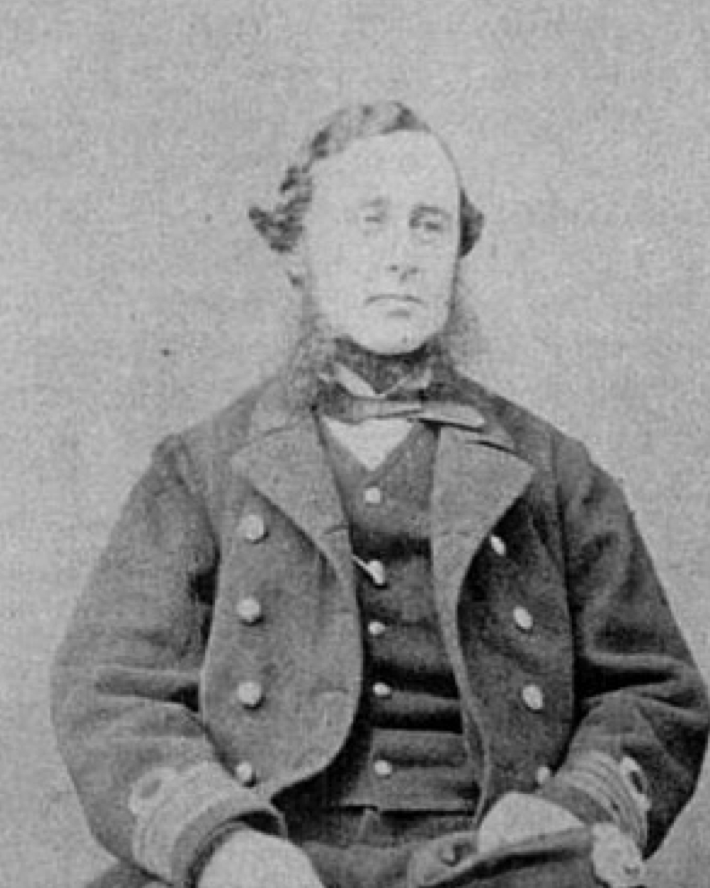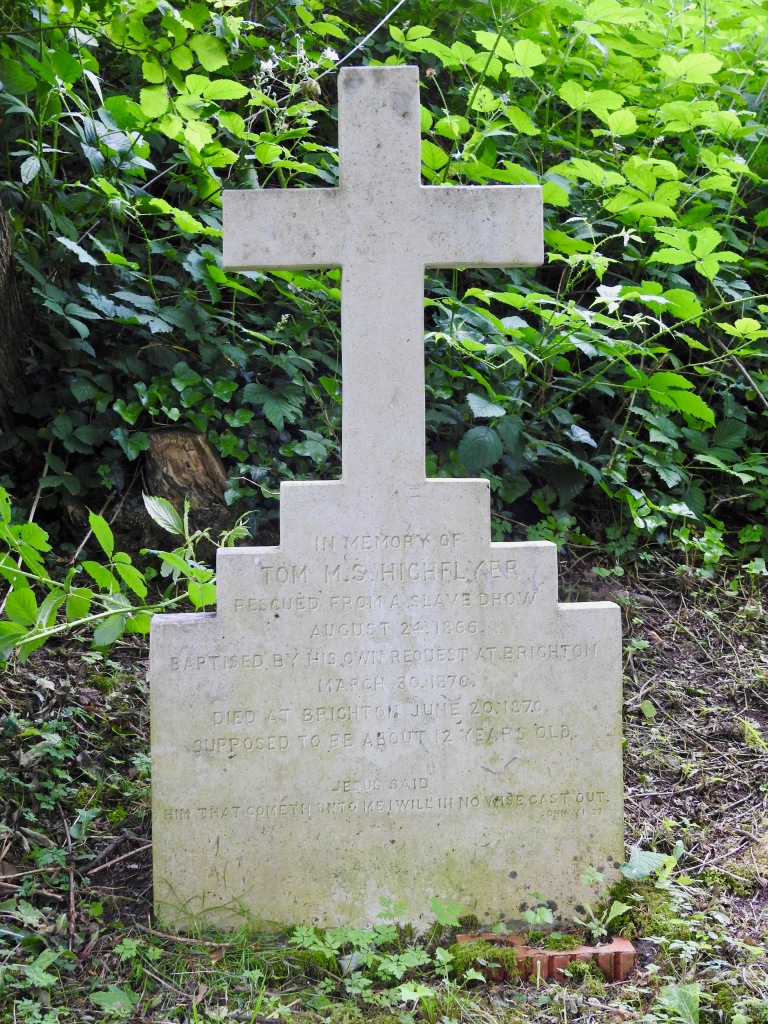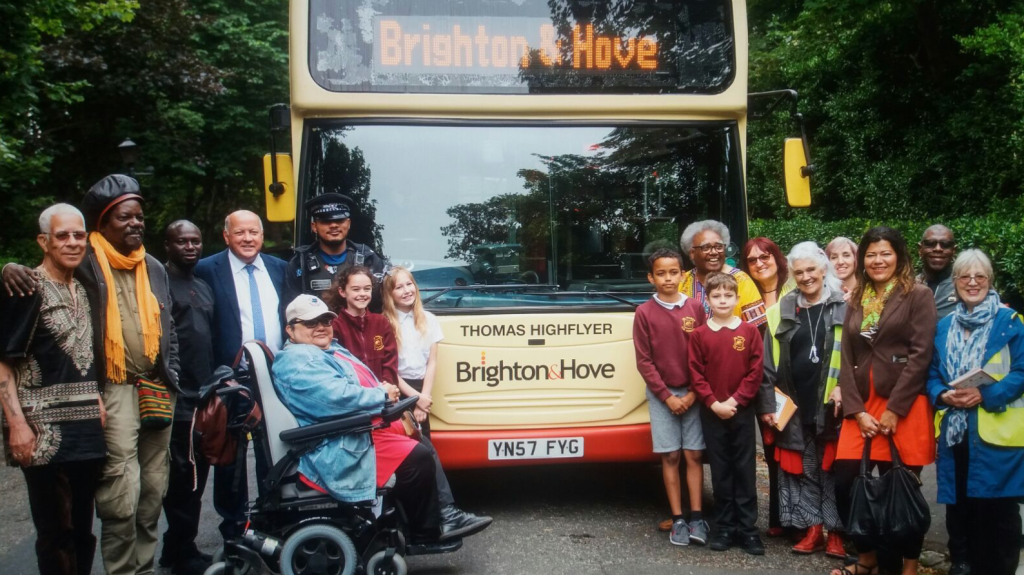The grave of 12-year-old Tom Highflyer is not easy to find. It is amongst the steep, dark overgrown slopes of the Woodvale extra-mural cemetery at Brighton. I had heard of him and wanted to visit the grave and pay my respects which I did this morning.

The headstone reads
IN MEMORY OF TOM M.S. HIGHFLYER
RESCUED FROM A SLAVE DHOW – AUGUST 24TH 1866.
But who was Tom and where did he get his unusual name?
Research conducted by the Brighton and Hove Black History Group has discovered his remarkable history.
HMS Highflyer was a Royal Navy wooden frigate built on the River Thames in 1851. The ship was powered by sail supplemented by a small steam engine. The ship saw service in Chinese waters during the Opium Wars but returned to Portsmouth where it was laid-off before being recommissioned in 1864. The new Captain was 35 year-old Thomas Malcom Sabine Pasley from West Rounton in Yorkshire. He was an experienced sailor having joined the navy aged 16 and who had seen action during the Crimean War. The ship’s new role was to join the East African Squadron which was trying to prevent the ongoing slave trade operating out of Zanzibar on the Indian Ocean.

Slavery had been banned by the passing of the Slave Trade Act at Westminster in 1807 but many other countries continued this evil trade and Britian, not only wished to stop it for humanitarian reasons, but was also concerned that other slave-trading countries were getting a commercial edge over the Empire.
On 24th August 1866, Captain Pasley and the men of HMS Highflyer liberated slaves from a slave-ship off the East African coast, amongst them was an eight-year-old boy, who stayed on board the ship, taking the name of the Captain ‘Thomas Malcom Sabine’ and for a surname used the name of the ship that rescued him ‘Highflyer’.

After two further years at sea, the boy arrived in England and young ‘Tom Highflyer’ was adopted by a retired Sussex coastguardsman Henry Thompson and his wife Eliza. It was said that they were ‘a kind woman and her husband who treated him as a father and mother’ The family home was on Great College Street, Brighton and Tom attended St Mark’s Primary School and a local church where on 30th March 1870 he was ‘baptised at his own request’.
Tom died of tuberculosis on 20th June 1870 and was buried at Woodvale, at this time the banks of the cemetery would have not been covered with vegetation and his small marble gravestone would have been much more visible. The fact that he had a gravestone at all shows that he was loved and the stone was probably partially paid for by his church.

Captain Pasley also died in 1870 and was buried in Cumbria. The following year HMS Highflyer was broken up in Portsmouth.
Over the years the grave of young Tom was virtually lost but not quite forgotten, it was mentioned in the 1995 cemetery guide. His name is listed along with mayors, freemasons, clergymen and industrialists – not bad for a young former slave whose death certificate shows him as ‘the son of an African – name unknown’.

But that is not the end of the story. In 2018 a project led by Burt Williams MBE resulted in Tom’s gravestone being removed, restored and replaced. A Brighton and Hove bus was even given his name and the story of Tom became more widely known. I have worked with Burt before when I was researching the fallen West Indian soldiers of the Great War who now lay at Seaford Cemetery; he is a good chap and a great communicator.

I am pleased that I found not only the grave of young Tom but also the fascinating story of his short life.
For more information including links to You-Tube videos see…
Sources:
Websites for Brighton and Hove Black History Group and author Remi Kapo. London Standard 1stSeptember 1868, Brighton and Hove Buses and Ancestry research. The portrait of Tom is by Lodovic Foster.